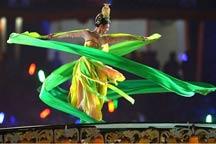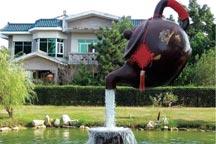Dengfeng Astro Observatory
 |
|
Dengfeng Astro Observatory |
The Astro Observatory, located at Gaocheng Town, to the southeast of and 15km away from Dengfeng, is the largest ancient observatory now existing in China. It is the cultural relics of significant value for scientific research and has the functions of measuring the shadow cast by the sun, observing celestial bodies, and telling time.
The observatory was in 1961 listed among the Key Cultural Relics under State Protection. At the request of the imperial order, the observatory was built up by Guo Shoujing and Wang Xun in 13th year of the Emperor Zhiyuan (1276 A.D.), Yuan Dynasty, and was one of the then 27 observation stations in China. The observatory, of masonry construction, consists of the body and the stone gnomon (or the nightblooming cereus, unofficially).
As the plane is square, the observatory has smaller upper part and larger lower part, and is 12.62m in overall height. At the north of it are designed with two symmetrical step entrances for observation. The center of the northern wall is built into a hollow groove that is perforated through from top to bottom, so the higher gnomon at the groove’s straight wall and the stone gnomon at the bottom constitute a series of gnomon apparatus for measuring the length of shadow cast by the sun. The stone gnomon at the bottom of the groove is connected with 36 blocks of blue stone from south to north, and is 31.2m in length and 0.53m in width. The gnomon is carved with two parallel two-way watercourses. To the south of the watercourses is a suction sump, and to the north a discharge sump. Each sump has scales for measuring the levelness.




















